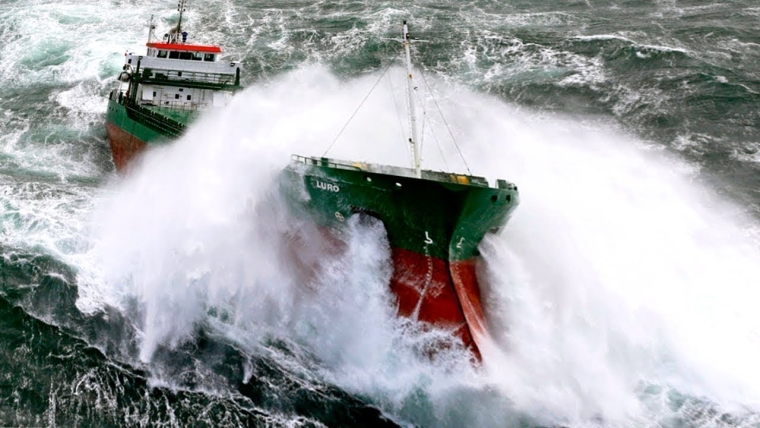
Fonterra’s Q3 results for 2018/19 show that Fonterra is running into headwinds with its strategic reset. That is not to suggest the current policy is necessarily flawed. Rather, it reflects the pickle that Fonterra has got itself into in recent years. It’s hard turning around a big ship.
The general media has focused on three headline messages. The first is that estimated milk price to farmers for this season just ending has dropped by 10c to between $6.30 and $6.40 per kg milksolids (fat plus protein).
The second message is that the initial estimate for the coming season is only $6.75, whereas most were expecting to see a ‘7’ at the start of the 2019/20 figure.
The third message is that this year’s underlying profit (before asset sales) will only be 10-15 cents per share. Back in September it was 25c to 35c.
These are all disappointing numbers, but the really important longer-term messages require deeper analysis.
But first to deal with those headline messages.
Given that the GDT auction prices have been rising steadily this year until the most recent sale, it is a little puzzling to see Fonterra drop its milk price by 10c. It would seem to say that Fonterra must have been expecting even greater increases in commodity prices over recent months. That was indeed brave of Fonterra.
As for next year’s price, I see $6.75 as definitely on the conservative side. But as I have said many times before, trying to estimate the coming season’s price so early in the season is little more than a guess. The good news is that in at least the last six years I cannot recall a time with less storm clouds in relation to milk price.
Currently, the major competitor nations of the EU, together with the USA, have production that is close to static. Australia is in decline.
The only worry is what might happen to the global economy and in particular what might happen to Chinese demand. Fortunately, Chinese mothers and fathers are still going to want milk for their children. The key question is whether or not Chinese stockpiles might be increasing, which would spell caution.
Returning to Fonterra’s own performance, a key metric is Fonterra’s margin on its sales. These are the margins that it makes from the processing of commodities, which is essentially a toll operation which should always run at a profit, plus the margins on specialised ingredients and consumer products. These numbers are in decline.
Bundling all of these categories together, then last year, Fonterra made an underlying profit of $382 million from so-called normalised operations. It was only the need to bring to account the historical debacles with Beingmate plus the Danone litigation from the botulism scare that dragged Fonterra down to a loss of $196 million.
Back in 2017, the profit after tax was $745 million. Profit in 2016 was $834 million. So things are not going at all well. Can the big ship be turned around and if so when?
Fonterra expects that this year’s operational profit before asset sales will now be at around $200 million (calculated from the mid-point of the currently estimated 10c to 15c per share). Back in September the same calculation based on Fonterra’s range of 25c to 35 gives $480 million. Hence, at this stage there is no sign of a turnaround.
When Fonterra announces its final profit for 2018/9, the profits and losses from asset sales will be brought to account. At this stage it is far from clear as to whether those capital items will add to or subtract from final profit.
So far, we know that the Venezuelan sale has led to a book loss of $123 million. This was stated back in February, but not brought to account at that time. Since then, Tip Top has been sold at an excellent price of $380 million, but how this compares to book value is less clear.
The closing of Dennington in Australia will have significant cost associated with it, and almost surely a write-down in stranded assets. Some of these costs may not show in the accounts until 2019/20.
Conversely, it is possible that the sale of Beingmate could bring a modest profit over book value, given that the major loss of value was brought to account last year. The other big unknown is what might happen with the China Farms.
Although Fonterra says it is on track to meet its target of $800 million of asset sales, Fonterra has yet to give any indication as to what this will do for net assets. All we know is that both gross assets and debt will decline.
When Fonterra states its debt ratio it uses a formula of interest-paying debt divided by this same debt plus equity. What gets left out of the equation is some billions of liabilities to famers and trade creditors, which at any time total some billions.
An alternative metric which I have never seen Fonterra use is net assets divided by total assets. That ratio at the end of 2017/18 was only 35 percent. Conversely, total liabilities were 65 percent of total assets.
There lies the worry. Although Fonterra does not use these metrics publicly, the banks and agencies that rate Fonterra’s risk will have their eyes on them.
At the end of the last financial year, Fonterra’s shares were valued by the market at $5.10. Now at the time of writing, they are valued at $4.20. Go back to the start of 2018 and they were $6.40. That tells us something about what the market thinks is happening to Fonterra’s net assets.
There are no easy ways to shore up the balance sheet. The easy opportunities were frittered away some years ago.
On 23 May, the day the Q3 results were announced to the market, Fonterra sent a letter to all its farmers with additional information that was not given to the broader market. By acting that way, Fonterra was indicating this additional information was not considered market sensitive. Nevertheless, that information does shed additional light on Fonterra’s quandary.
Here is what Fonterra told its farmers.
A number of farmers are facing significant financial pressure in relation to their farm balance sheets as a result of the Co-op's lower share value, together with more stringent bank lending requirements impacting customers in the agriculture sector.
As such, the Board has:
- Set the 2019/2020 Compliance Date as 20 April 2020;
- Offered a one-year share up extension to farmers in their fourth, fifth or sixth year of a six-year Share Up Over Time Contract; and
- Given farmers who wish to participate in Delegated Compliance Trading until 1 February 2020 to elect to do this.
Fonterra says these concessions will be relevant to 2100 farmers who need to buy shares.
The key insight, – which many of us already knew, but seeing it in black and white from Fonterra makes explicit – is that the new banking guidelines are placing many farmers under cash-flow pressure. Hence, Fonterra is caught between a rock and a hard place in looking after both its own corporate needs and looking after its members.
*Keith Woodford was Professor of Farm Management and Agribusiness at Lincoln University for 15 years through to 2015. He is now Principal Consultant at AgriFood Systems Ltd. His articles are archived at http://keithwoodford.wordpress.com. You can contact him directly here.
21 Comments
I see Landcorp (Pamu), Lost another shepherd last week on a quad bike ( Female). Pamu have lost a lot of staff over the last 20 years in work related accidents, I believe way above the industry average. I asked a staff member and he said they are overworked and production driven, understaffed and he's sick of it, applying for other jobs, he's skilled.
My local contractor does a lot of tractor work for Pamu, he tells me he hasn't been paid for work done since November 2018, he does a lot of work for them and it's hurting.
It looks like its not just Fonterra thats hurting.
Meanwhile back in the Northern hemisphere USA is bailing out farmers:
https://www.producer.com/2019/05/u-s-announces-us16-billion-of-farm-ass…
Keith.
If at the end of 17/18, net assets divided by total assets was 35 percent and share price $5.10 does that imply the markets perceives a matching debt of around $9.50/share?
Is a figure for total Fonterra debt available?
How do total kilograms of milk solids processed by Fonterra relate to total share number?
How does total Fonterra debt compare in size to the total on farm debt of Fonterra dairy farmers (or the total dairy industry)?
Thanks
Gatoperro
Liabilites were 11.66 billion. These are know with some level of precision.
Gross assets were valued at 18 billion including intangibles.
Net assets were 6.35 billion (the difference between these).
There were 1.612 billion shares.
The book value of net assets was just under $4 per share.
A market price of $5.10 indicated that the market thought assets were undervalued. That perception has melted away in the last 9 months.
Total bank debt of dairy farmers is about $42 billion. Fonterra has a market share of around 80.5% so a rough estimate of the bank debt of Fonterra farmers would be about $33 billion.
A key point in understanding Fonterra's financial situation is to recognise that when they use the term 'debt' they only include interest bearing debt. They typically have another four or five billion of liabilities, these being their trade creditors and money owning to farmers.
KeithW
And those shareholders who already have the bank looking over their shoulders? How di you think the banks will react.
What about sharemilkers? Why should should shareholders suddenly get access to sharemilkers earnings to bolster shareholders accounts.
That's a lot of collateral damage.
Redcows take a look at the longer term, a strong fonterra is critical to dairying and all who derive an income from it, company could limp along for 10 years or it could fix it in 1 year. Short term thinking has got where it it is. Not far behind the Westland debarcle
Asset sales are occurring and profit retentions will occur.
Milk retentions are more serious for three reasons:
1) Some of this is the entitlement of 2700 sharemilkers who are not members of Fonterra
2) A significant number of Fonterra members are caught by new requirements to repay capital to their banks
3) Fonterra said when TAF came in that they would never do this .But of course they have already done it twice
Keith





We welcome your comments below. If you are not already registered, please register to comment.
Remember we welcome robust, respectful and insightful debate. We don't welcome abusive or defamatory comments and will de-register those repeatedly making such comments. Our current comment policy is here.